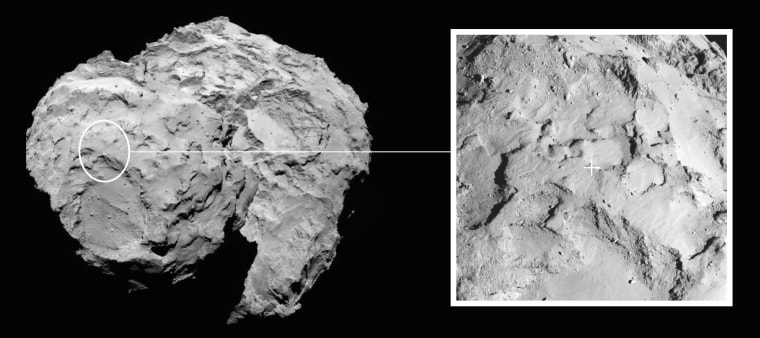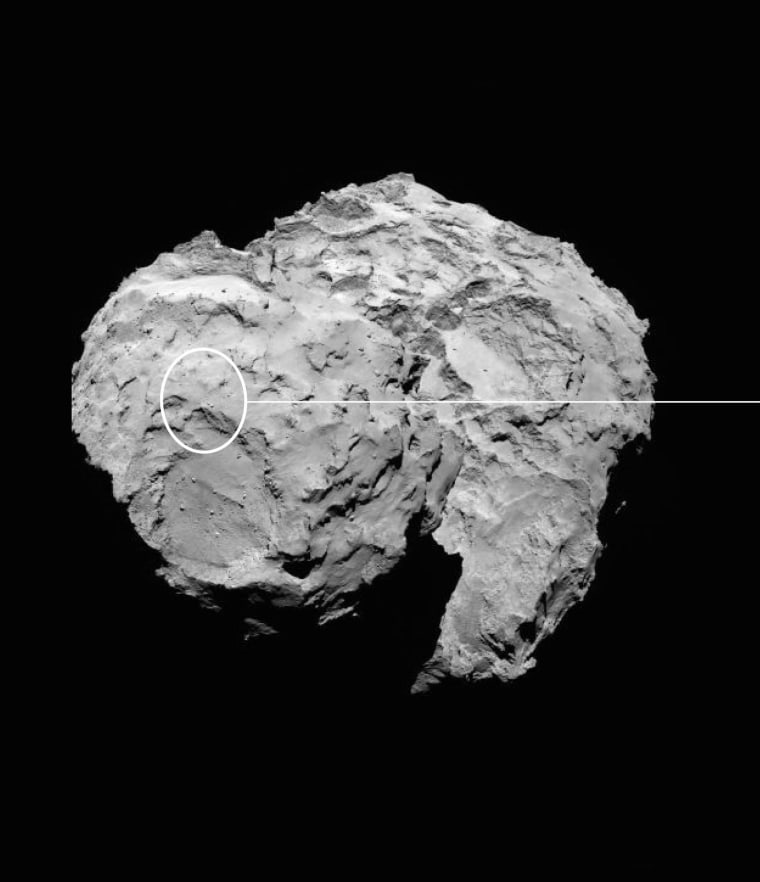A European spacecraft flying alongside a comet in deep space finally has a place to land after a 10-year journey through the solar system.
The European Space Agency on Monday unveiled the target landing site on Comet 67P/Churyumov–Gerasimenko for the Philae lander riding aboard the agency's Rosetta mission. Mission controllers picked a drop zone called "Site J" as the primary target from five potential landing sites shortlisted in late August, just after Rosetta arrived at the comet.
If all goes well, the lander will touch down on the comet on Nov. 11.
"There are flat areas, but there is also rough terrain," Stephan Ulamec, Philae lander manager at the German Aerospace Center, said of Site J during a news conference. "There are some cliffs, there are some boulders. … It's not a perfectly flat area as we probably would have hoped for a safe landing site." [Incredible Comet Photos by Rosetta and Philae]
Philae has been safely flying with Rosetta since their launch. The two spacecraft are currently flying about 18.6 miles (30 kilometers) from Comet Churyumov-Gerasimenko, but in November, Rosetta is expected to deploy Philae on an historic trip to study the comet while attached to its surface at Site J.
Site J won't be called that forever. The European Space Agency will host a public competition to name the landing site. A backup landing site, called "Site C," has also been selected.

The primary landing zone is a sunny region located on the comet's "head" — the smaller of the two lobes of the 2.5-mile-long (4 kilometer) comet. The region is in close proximity to an area that could become active as the comet starts flying closer to the sun, which could give scientists an unprecedented look at the way a comet works.
The landing will mark the first time a space agency has attempted to soft-land a probe on a comet. NASA's Deep Impact spacecraft was purposefully crashed into a different comet by ground controllers in 2005.
— Miriam Kramer, Space.com
This is a condensed version of a report from Space.com. Read the full report. Follow Miriam Kramer on Twitter and Google+. Follow Space.com on Twitter, Facebook and Google+.
